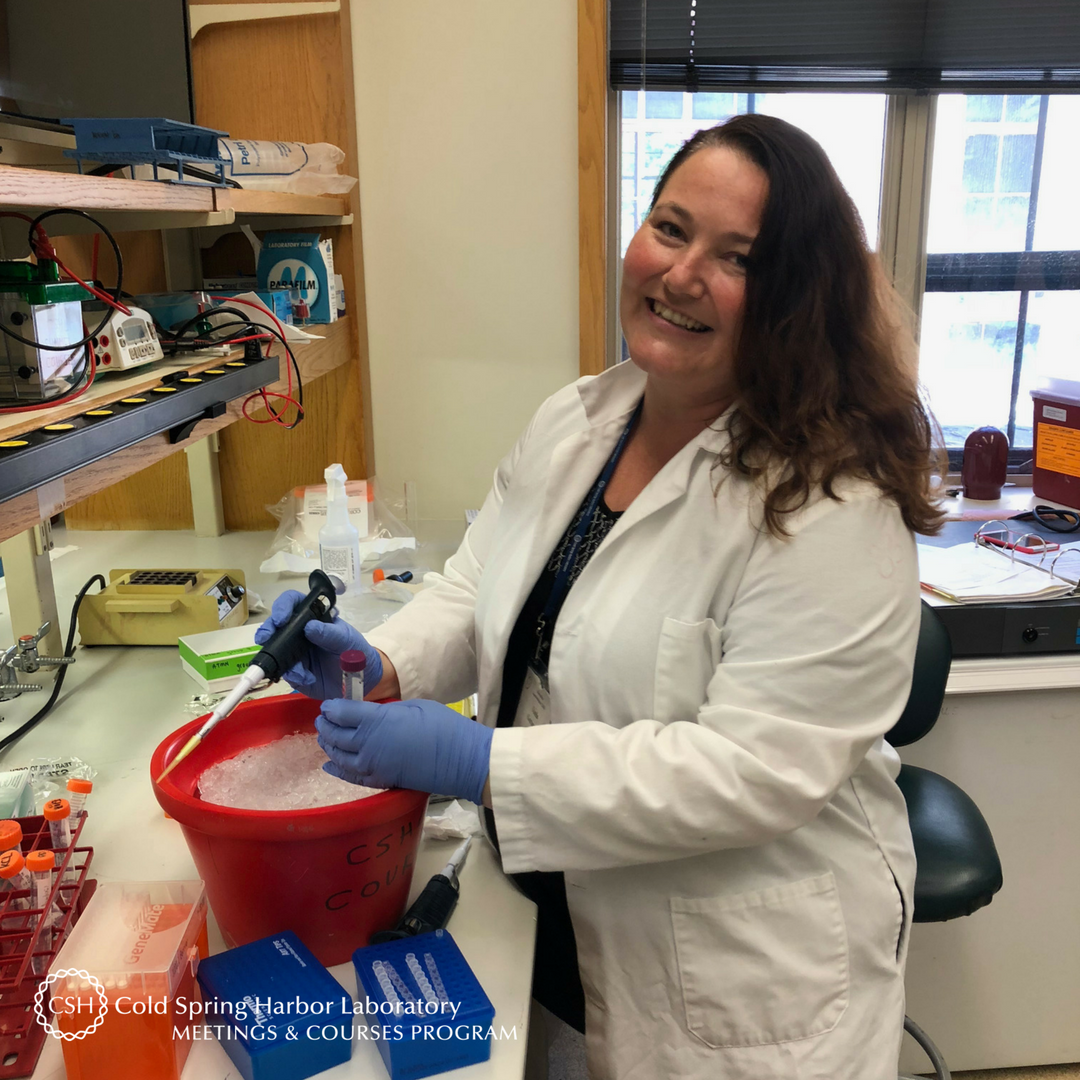Meet Artemiza Martinez of the International Laboratory of Human Genome Research (LIIGH) at the Universidad Nacional Autonoma de Mexico. Artemiza did her undergraduate studies at LIIGH before transitioning into a research assistant in Lucia Morales’ Yeast Genome Evolution lab. The Mexican national is on campus training at the Yeast Genetics & Genomics course where she is expanding her knowledge of yeast and gaining wet lab experience to further strengthen her PhD application. She also talks about the crowdfunding campaign she set up to fund a portion of her tuition.
What are your research interests? What are you working on?
I am working to understand evolutionary processes using yeast as a model system. In the lab, we are working with hybrid yeasts to understand the process of hybridization. At the same time I love fermentative processes because it’s really interesting how yeasts perform to obtain different products like wine.
How did you decide to make this the focus of your research?
Because there are so many different topics I am passionate about and could be happy working with, I wasn’t entirely sure what I want to study until recently. My various research internships and undergraduate thesis guided me towards studying yeast genetics, and I really love what I do.
How did your scientific journey begin?
In high school I took a genetics class and it was my favorite. After reading an article on the applications of microorganisms in many of the products we use daily, I decided to study biotechnology. I became even more passionate about science during my undergraduate thesis work at LIIGH and thanks to the investigators who work there and shared with me their life stories and the importance of scientific research.
Was there something specific about the Yeast Genetics & Genomics course that drew you to apply?
I was motivated by my desire to learn more about yeast and to strengthen the base for my doctorate. In LIIGH, we normally focus on bioinformatics analyses so we have little wet lab experience. Many of the techniques in the course are of great utility to answer future questions in the laboratory, and I am certain this course will develop my skills and knowledge of lab protocols and methodologies.
You created an online fundraiser that helped raise funds to attend the yeast course - talk us through what brought on the initiative.
Because the US dollar has been very strong compared with my national currency (the Mexican peso) it was very difficult for me to pay for the course. Thankfully, I was able to receive financial support from the Helmsley Charitable Trust and HHMI but I needed to raise the funds to cover the remaining balance. And since attending this course is an opportunity I could not let go to waste, I decided to set up a fundraiser. My goal was $1,756 USD (which includes Donadora’s commission) and I am happy to announce that I achieved my goal. I am very thankful for the many people who donated and helped make possible my attendance to this course, and now it is my duty to learn and share my knowledge in my country.
Would you recommend future course trainees to start their own online fundraising campaign to help finance their participation in a CSHL course?
It is a good option for those who lack the funds to attend the course but it will require time to put together and get off the ground. I spent hours contacting people to convince them of the benefits of my attending a training course in the US and inform them of my fundraiser. This was hard and frustrating at first but when the donations began to come in, I felt nothing but joy and gratitude. Now, I feel even more motivated to achieve my goals which I share with those who supported me and expect the best of me.
What and/or how will you apply what you've learned from the course to your work?
Many of the methodologies being discussed and shown in the course are necessary for the project on which we are working. My intention is to be able to transmit this knowledge to the new students entering the lab who are interested in working with yeast.
What is your key takeaway from the course?
That working in the lab can be so much fun! I have gotten to know experienced researchers working on very interesting topics who are further motivating me to pursue my goals. The ability and opportunity to share what you do and your passion for science with people from all over the world is a very gratifying sensation.
How many CSHL courses have you attended?
This is my first course in CSHL, I hope it is not the last.
If someone curious in attending this course asked you for feedback or advice on it, what would you tell him/her?
It is an intense course that demands all your energy but it is totally worth it. The instructors and teaching assistants put so much effort and joy into preparing and teaching that instead of feeling tired, you become curious and ready to learn more and take full advantage of the course. And of course, you cannot miss out on the opportunity to train at such a beautiful institute.
What do you like most about your time at CSHL?
Learning science here is fun and every day there is something new to enjoy.
Artemiza received a scholarship from the Helmsley Charitable Trust and financial support from the Howard Hughes Medical Institute (HHMI) to cover a portion of her course tuition. On behalf of Artemiza, thank you to the Helmsley Charitable Trust and HHMI for supporting and enabling our young scientists to attend a CSHL course where they expand their skills, knowledge, and network.
Thank you to Artemiza for being this week's featured visitor. To meet other featured scientists - and discover the wide range of science that takes part in a CSHL meeting or course - go here.










